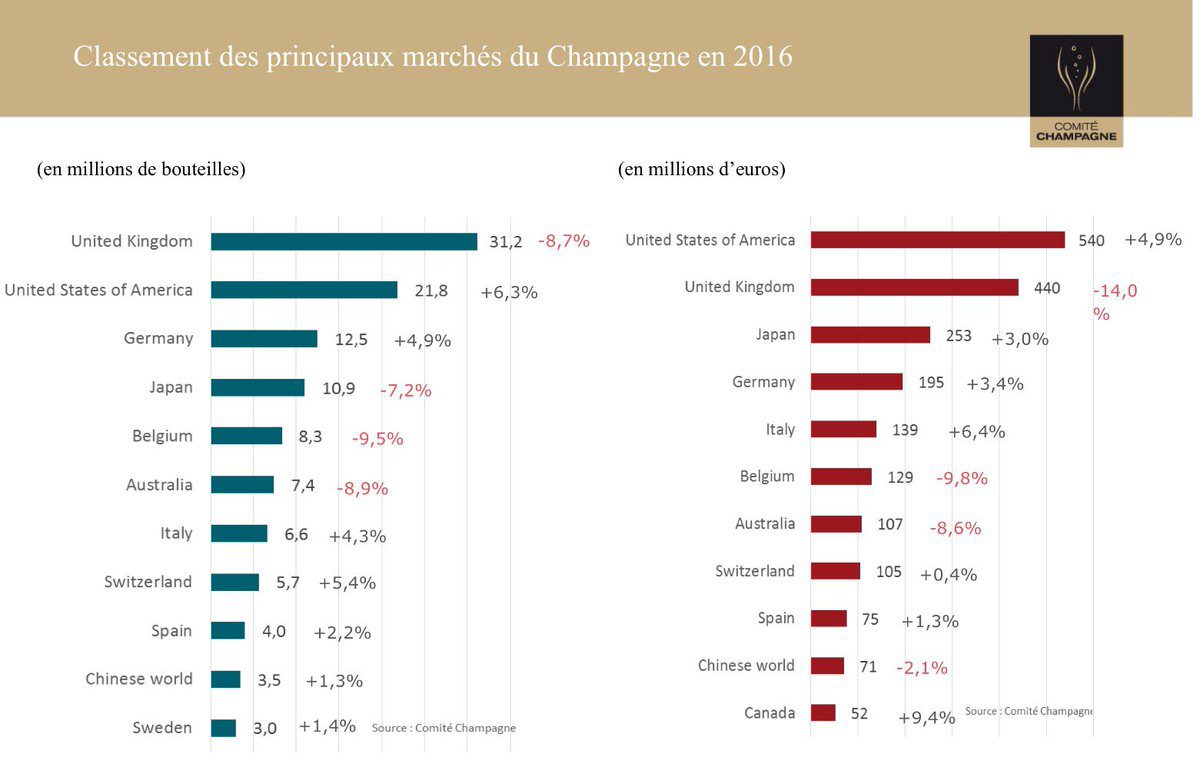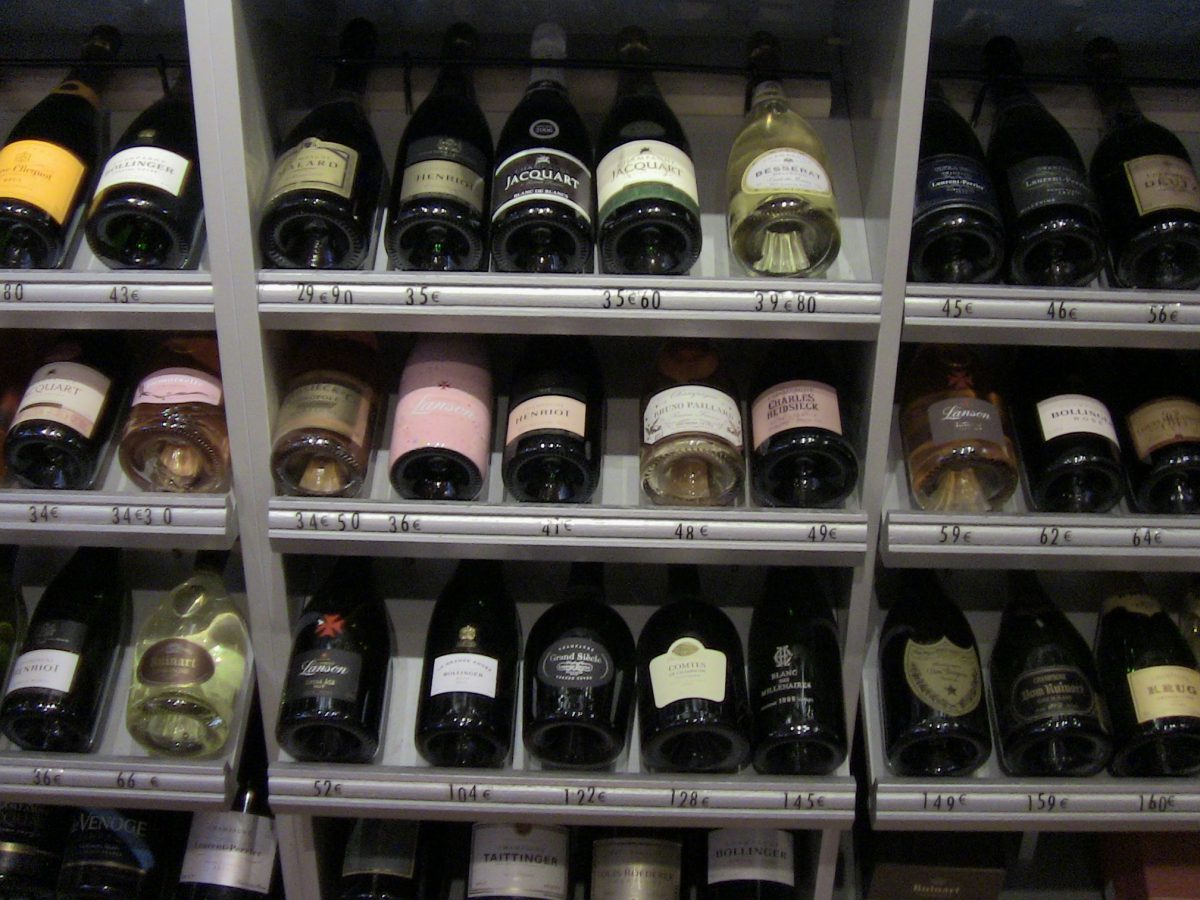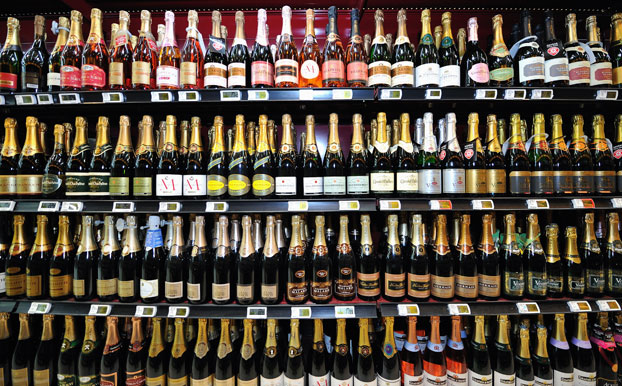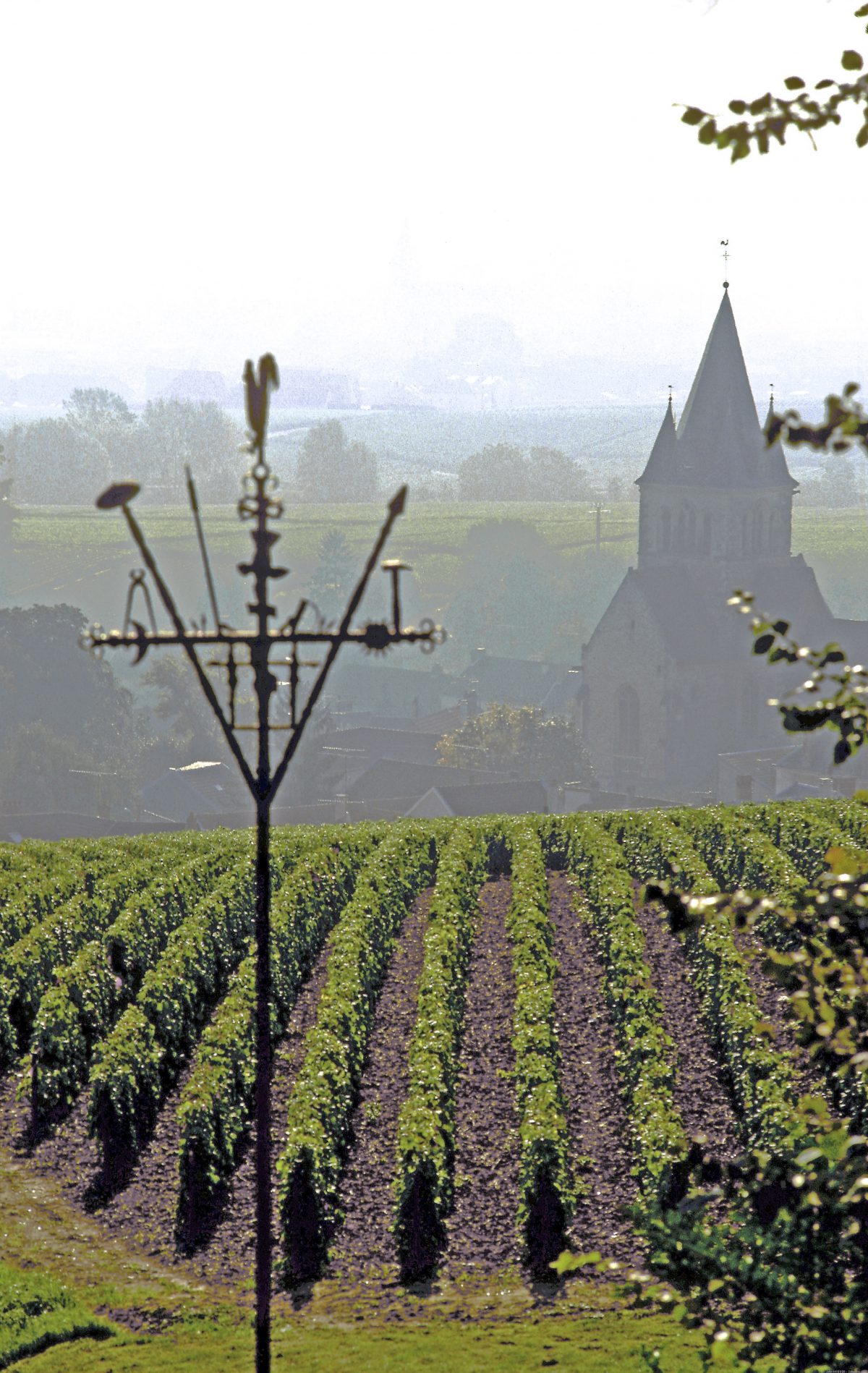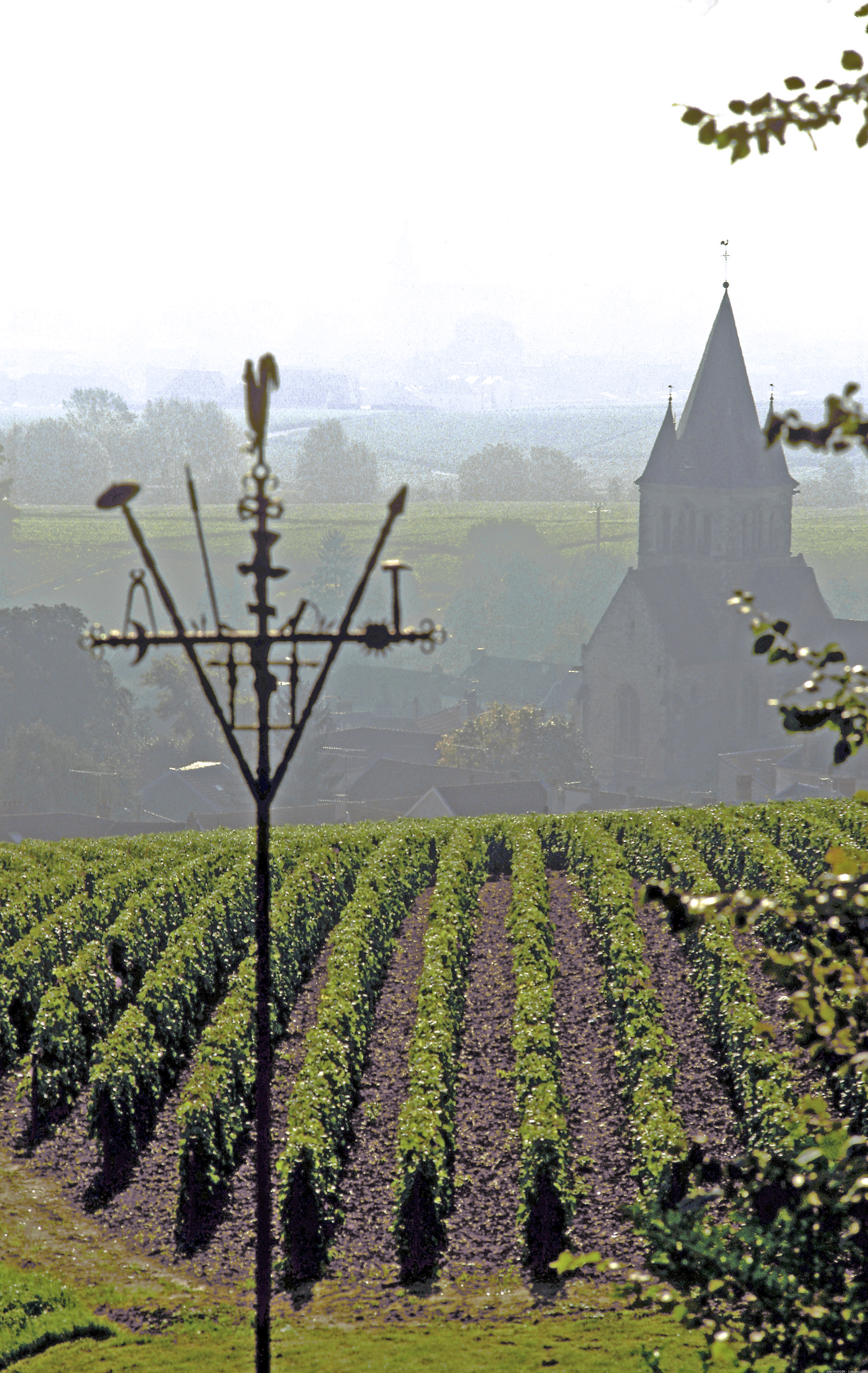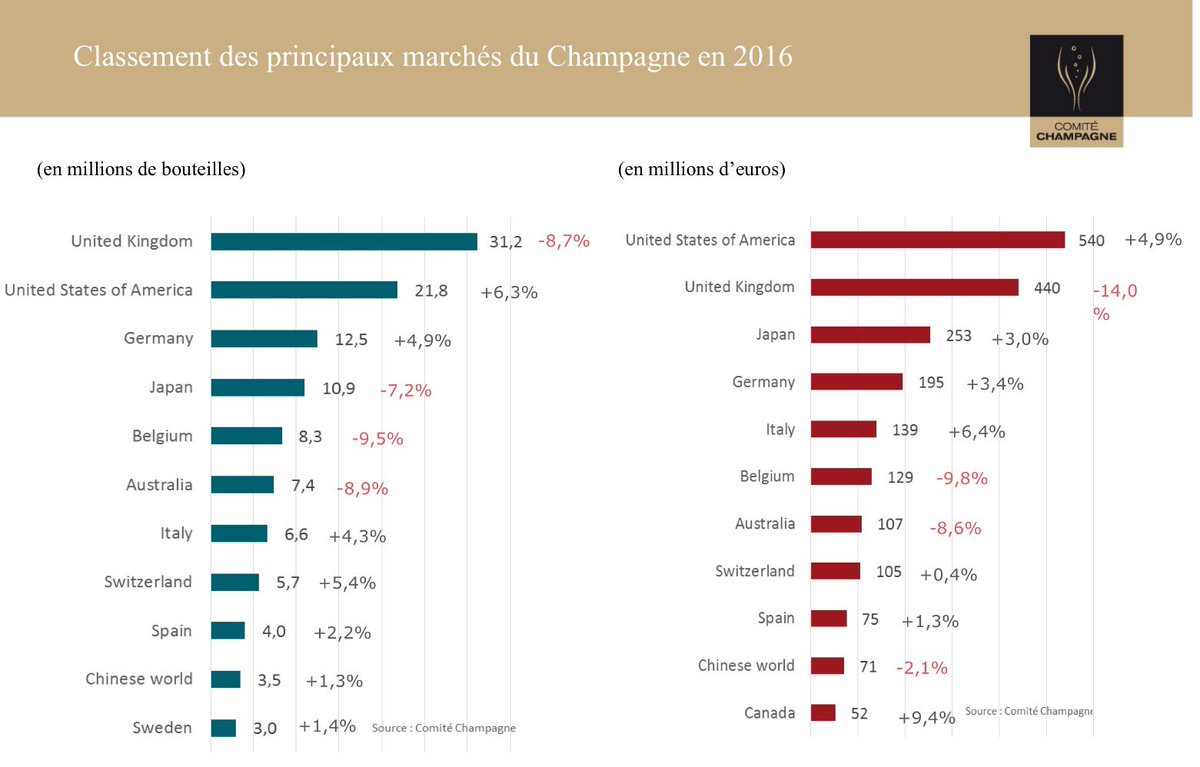 Today, the Comité Interprofessionnel du Vin de Champagne released its sales and shipment results for the Champagne sector in 2016.
Today, the Comité Interprofessionnel du Vin de Champagne released its sales and shipment results for the Champagne sector in 2016.
Here is the list of the top markets for 2016, along with some findings:
- Champagne exports continues to progress, especially outside Europe;
- Consumers are diversifying their tastes and turning to Rosé Champagne and Prestige Cuvées – Rosé Champagne grew (+8,6% in vol) and Prestige Cuvées grew (+4,7%);
- 2016 is the second record year (4.71 billion euros) after 2015 (4.74 billion euros); and
- Many countries confirm their status as growth drivers: (+ 9.4% Canada), United States (+ 6.3%), (+12% Mexico), (+ 15.1% in South Africa), (+ 25.4% in New Zealand), and (+ 14.2% in South Korea).

